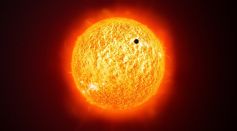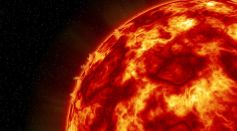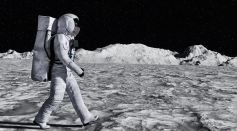Tags: Solar Wind

Predicting Space Weather Now Made Easier

Rare Solar Wind Gap May Have Led to Expansion of Mars' Atmosphere in Incredibly Baffling Event Observed by NASA MAVEN Orbiter
Mars’ Atmosphere Swells Nearly 4 Times Its Usual Size Without Solar Wind
Giant Hole in Sun Wider Than 60 Earths, 5 Times Jupiter’s Diameter Spewing Powerful Solar Wind
Northern Lights Explained: What Causes Aurora Borealis?
Solar Wind Blows Away Comet Nishimura’s Tail As It Approaches Earth, Sun
Sun Has Numerous Tiny Jets That Expel Plasma, Trigger Solar Wind [Study]

How the Earth's Magnetic Field Shields Us from Space's Wrath

Monstrous Sunspot Unleashed the Carrington Event, History's Most Destructive Solar Storm

NASA's Parker Solar Probe Peers Into the Sun, Uncovers Source of Solar Wind

Solar Wind Generates Water on the Moon, Chinese Scientists Say
Will the G2-Level Geomagnetic Storm Have an Impact on People?
Mars' 2nd Type of Aurora Described As ‘Patchy' and ‘Chaotic’ Protecting Planet From Solar Wind
Dangerous, High-Speed Solar Wind to Strike Earth At 800 km/sec: How Will This Affect the Power Grid in the UK?

NASA Spacecraft Makes 12th Close Flyby Today: A Mission Where Material from Sun Leaves the Surface, Becomes Solar Wind

NASA Investigates Suspicious Bumps in Atmosphere Above North Pole After 2-Year Delay
What Happens When Solar Wind Hits Earth? Experts Explain Using Sound Waves [LISTEN]

NOAA: G2 Level Geomagnetic Storm and Aurora Borealis Predicted to Head South
How Can Planets Survive White Dwarf's Stellar Evolution? Signs of Life on Planet Near a Dying Star Impossible
Total Solar Eclipses Shed Light on the Temperature of Solar Winds and Sun's Corona
Most Popular

Largest Known Volcanic Aquifer Discovered Beneath Oregon's Cascades

New 'Supergiant' Sea Bug Found in South China Sea, Named After Darth Vader

Mediterranean Sea Was Refilled by a Catastrophic Flood Millions of Years Ago

Mysterious Cosmic Waves That Sound Like Birds Detected in Unexpected Space Region





